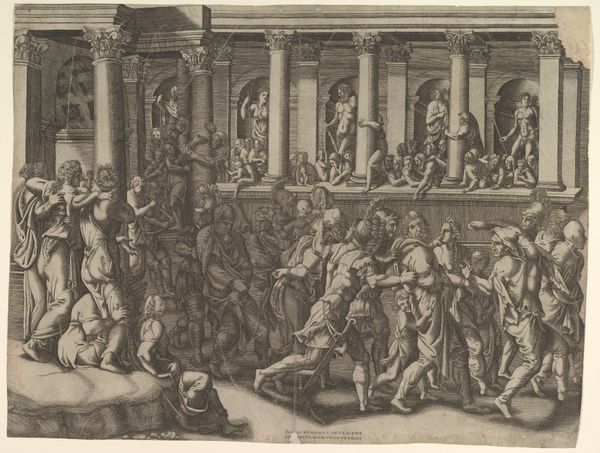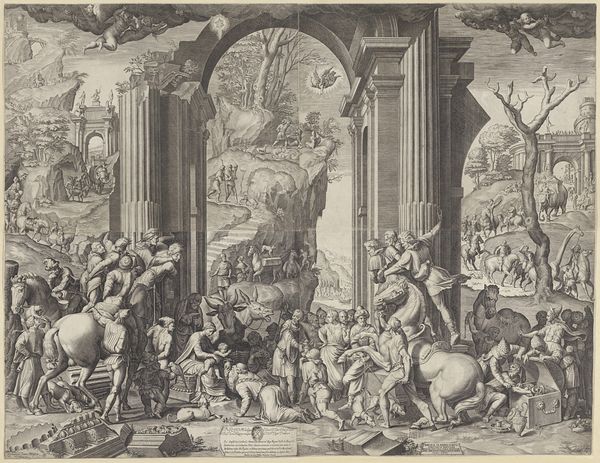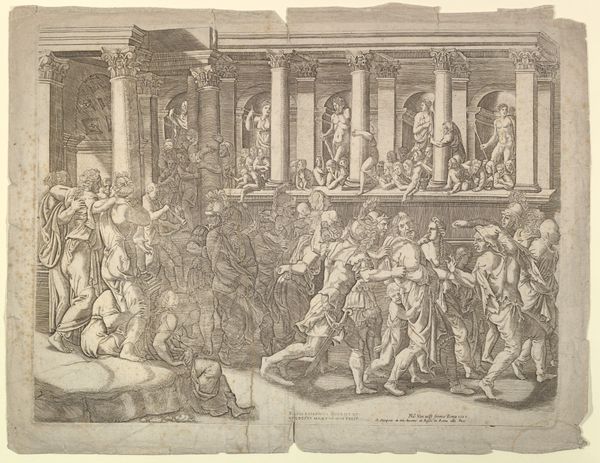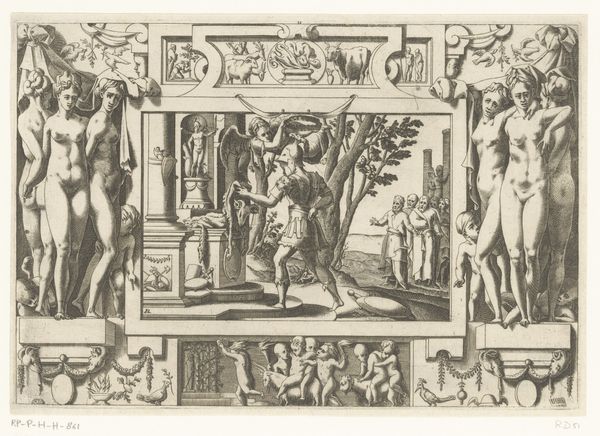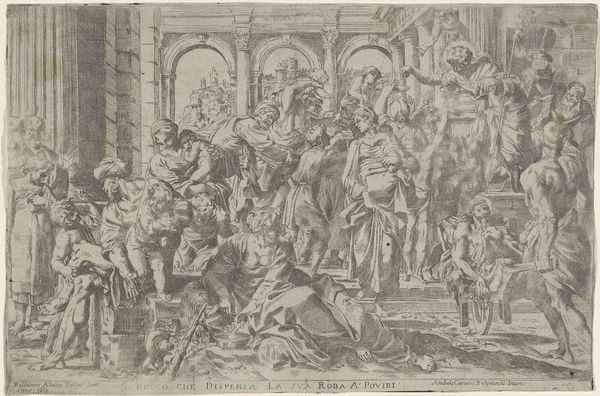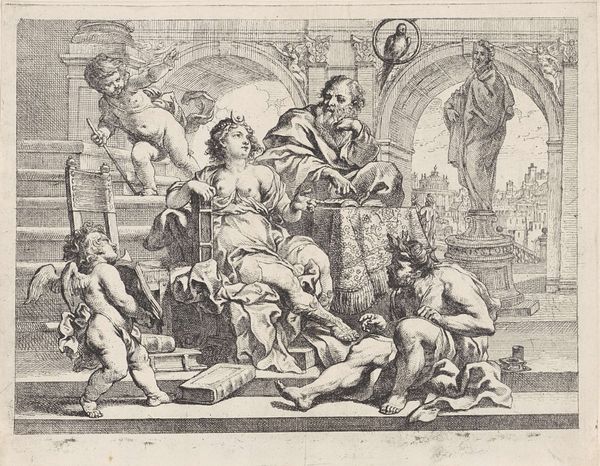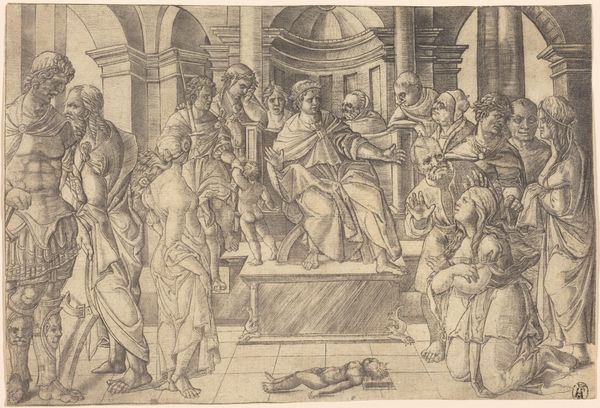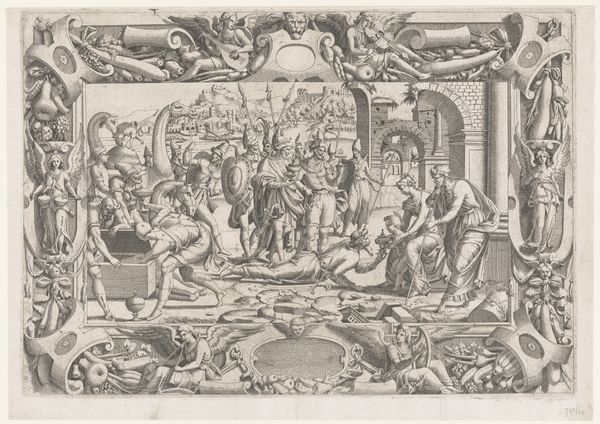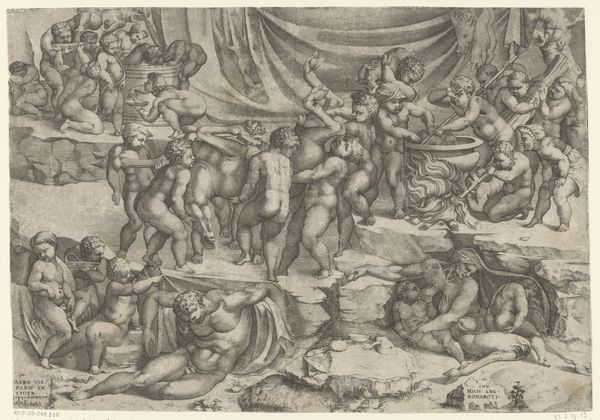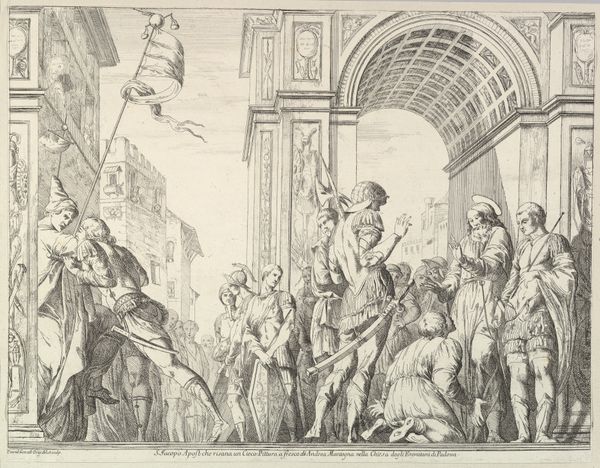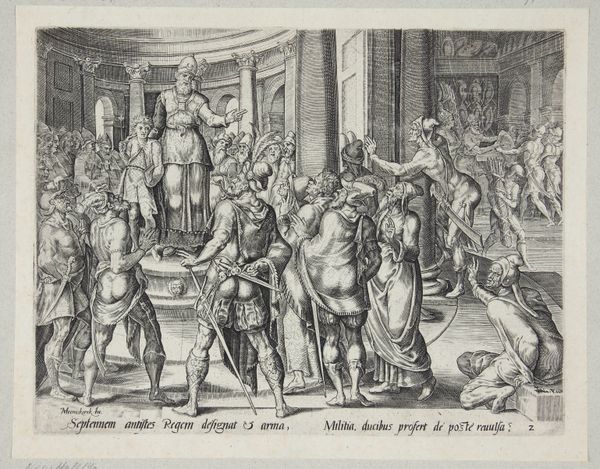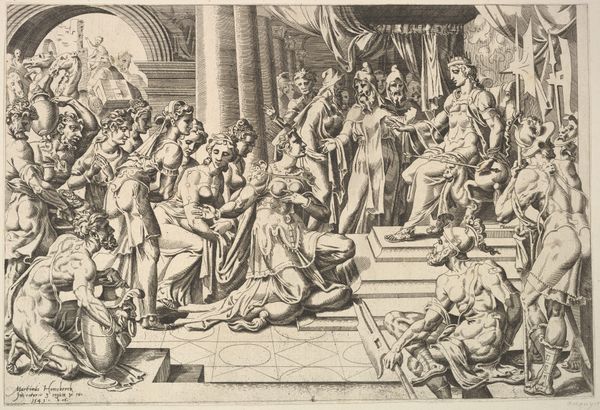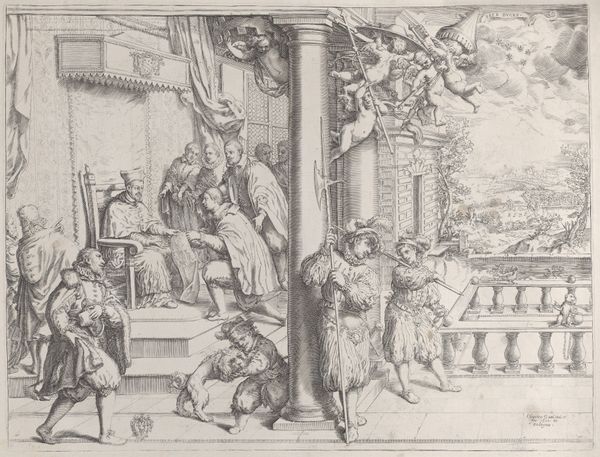
drawing, print, engraving
#
drawing
#
allegory
#
pen drawing
#
animal
# print
#
mannerism
#
figuration
#
history-painting
#
italian-renaissance
#
engraving
Dimensions: sheet: 12 3/8 x 18 1/2 in. (31.5 x 47 cm) Print trimmed 1/8 in. below
Copyright: Public Domain
Curator: Right, let's turn our attention to "The Indian Triumph of Bacchus," an engraving dating from 1537 to 1547, after an earlier work. It is currently held in the collection of the Metropolitan Museum. Editor: My goodness, it’s a real spectacle, isn’t it? Overflowing, almost ridiculously so, with figures and animals. Like a parade dreamt up by a wildly imaginative toddler who's been given free rein of the mythological dressing-up box. Curator: Precisely. Enea Vico, the artist behind this engraving, was deeply embedded in the Mannerist style, favoring complex compositions, elongated figures, and a sense of heightened drama. Bacchus's triumph was a popular theme used by Roman Emperors to assert their power. Editor: The longer I look, the more absurd it becomes! Are those… giraffes? Carrying drunk, slightly-too-casual gods? There's such a strange juxtaposition of the exotic, almost humorous animals, with this very serious classical setting in the background. It’s all columns and composure in the back, but total revelry in the foreground. Curator: Exactly. This print, like many Renaissance prints, was as much about spreading ideas as it was about artistic expression. The depiction of exotic animals would certainly appeal to a larger audience, a means of both instruction and engagement, furthering an understanding of Bacchus in relation to conquest and excess. Editor: I find the medium interesting as well, given the precision demanded by engraving. Think of how methodical it must have been to create all of those delicate lines, hatching to create shadow, capturing something so exuberant through meticulous process. The level of control against such bacchanalian abandon! Curator: Indeed, and through dissemination as a print, this image, though conceived initially for an elite audience perhaps, ultimately entered into broader circulation. These works played a crucial role in the evolution of taste. Editor: This piece makes you realize that beneath any triumph, no matter how grand or historically impactful, is always just a really good party... Or at least the possibility of one! Curator: Indeed. Its enduring legacy underscores how artworks shape our understanding of the past while simultaneously offering moments of connection with our humanity.
Comments
No comments
Be the first to comment and join the conversation on the ultimate creative platform.
